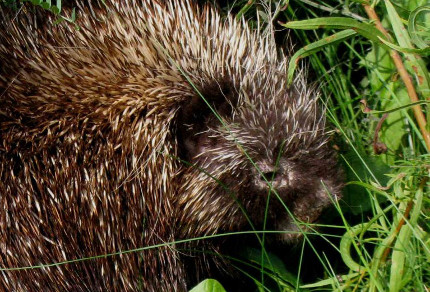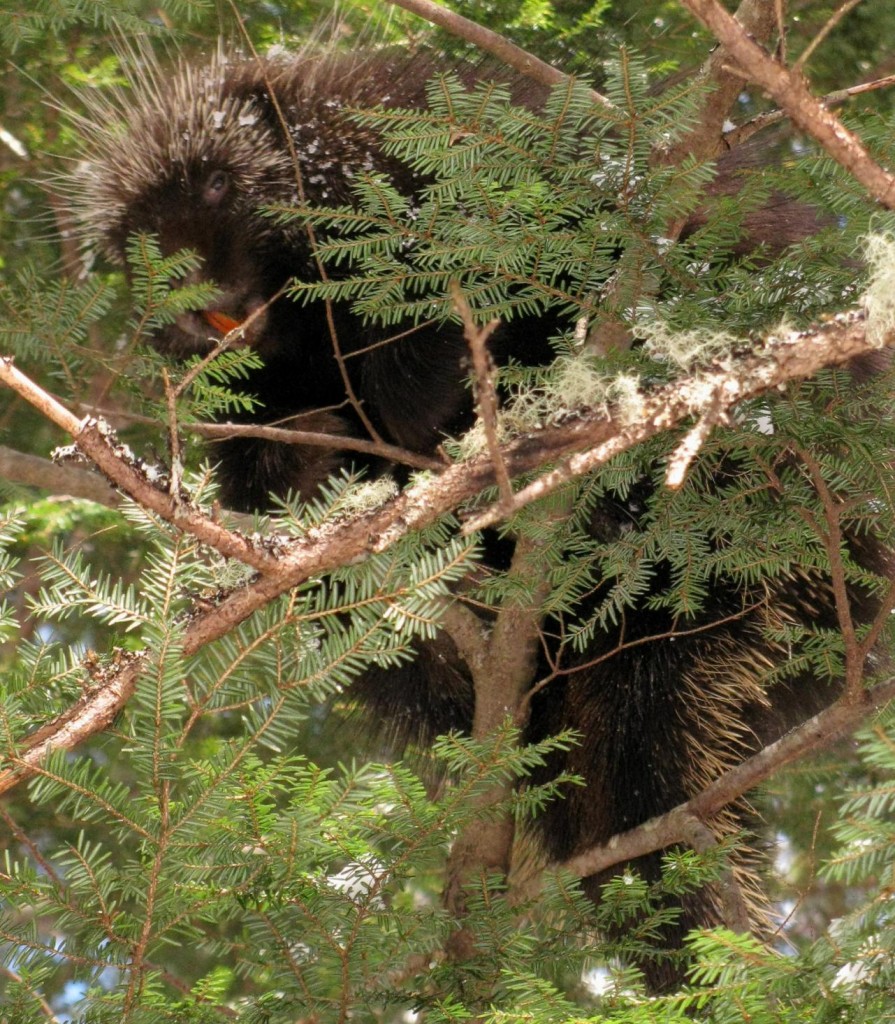
Porcupine in Hemlock Tree (© Magi Nams)
Almost a month beyond the vernal equinox, American robins belt out their melodic ‘cheerio-cheeriup-cheerio’ as night creeps into day. Juncos trill monotonic territorial defence proclamations, mourning doves coo husky mating songs, and crows snap out sharp calls and gather nesting materials. Raindrops hang from twigs like scintillating decorations in morning sun. Snow still lingers in the woods. On a recent walk, I noticed large bare, irregular patches on the trunk of a hemlock tree, sure sign that a porcupine had been at work.
Armed with strong, orange incisor teeth, porcupines are North America’s only large rodents equipped to feed in the the tops of trees. As well as consuming sap-bearing bark, they eat leaves, twigs, and buds (1). Bark chips, chewed-off branches, and oval, greenish-brown fecal pellets strewn on the ground under trees are sure signs of their foraging. Porcupines feed on both evergreen and deciduous trees, which are their main diet in winter. In summer, they often feed on the ground, eating grasses and herbs (1).
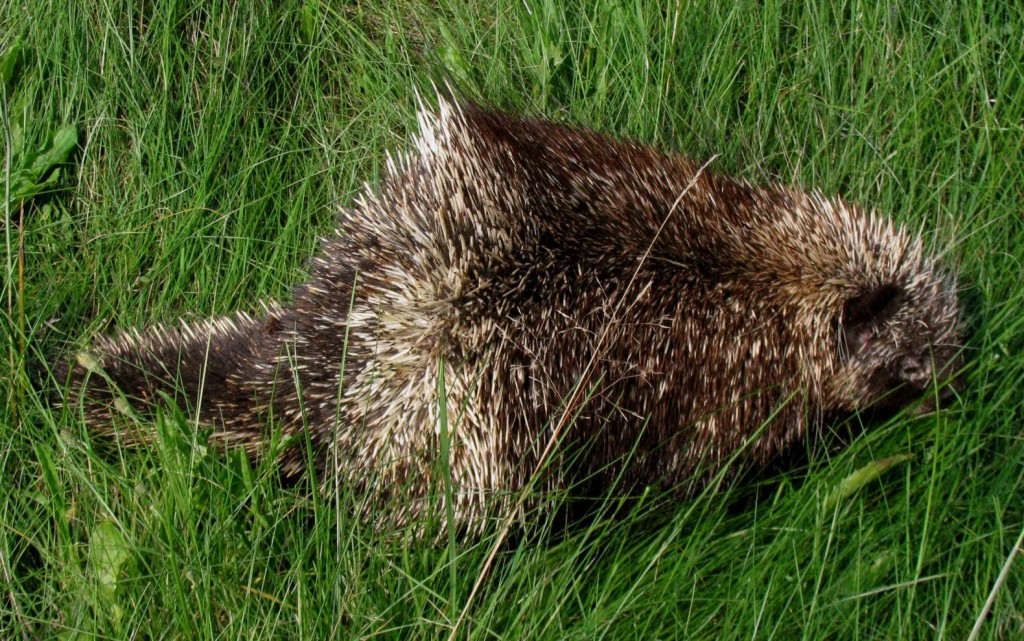
Porcupine (© Magi Nams)
Two summers ago, Vilis and I had a regular porky or quill-pig visitor to our yard, where it helped itself to pig food in an outdoor trough and unfortunately trashed one of my young pear trees. Unwilling to sacrifice any more of my fruit trees, I bundled the slow-moving, lumbering herbivore into a tarpaulin and drove it off into the forest well away from our yard. This task necessitated the use of quick reflexes and thick leather mittens to avoid being pierced by the porky’s defence system – its quills.
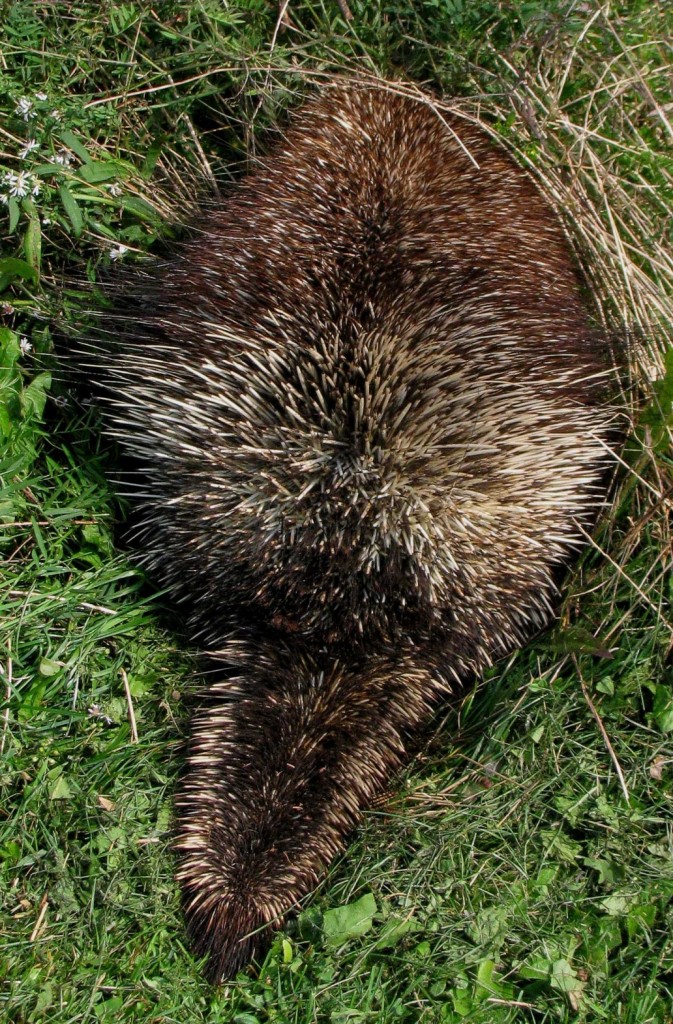
Porcupine on Defence (© Magi Nams)
Porcupines’ quills are thickened, hollow, modified hairs with extremely sharp tips having backward-facing barbs. They cover their owners from head to tail, with the exception of the porcupine’s face, belly, and paws. Cloaked with this arsenal, porcupines are generally unmolested by predators, except for fishers and great horned owls. The fishers immobilze their prey by biting the porcupine’s face, and then flip it over to expose its unprotected belly. The owls also attack the porcupine’s face, sinking their talons into their prey’s eyes and brain (1).
When threatened, a porcupine hides its face and contracts skin muscles to raise its defence system – quills up and ready for an unwary attacker. Porcupines can’t shoot out their quills, but the barbed needles release easily. As well, the porkies’ quill-loaded tails are maneuverable, so can deliver a swat loaded with pain. Decades ago, my too-curious dog ended up with a muzzle full of quills so often that Vilis and I carried a needle-nosed pliers with us whenever we took him for a walk in the woods.
Porcupines are solitary creatures that forage for food within a home range, but don’t defend territories. They’re active all year and raise only one offspring per year, which is born in late spring with open eyes and working quills (1). Unlike their South American cousins, porcupines don’t have to compete with monkeys, sloths, and leaf-eating squirrels for food. These lumbering mammalian fortresses have the North American treetops to themselves, all the way from Mexico to Alaska and northern Quebec (1).
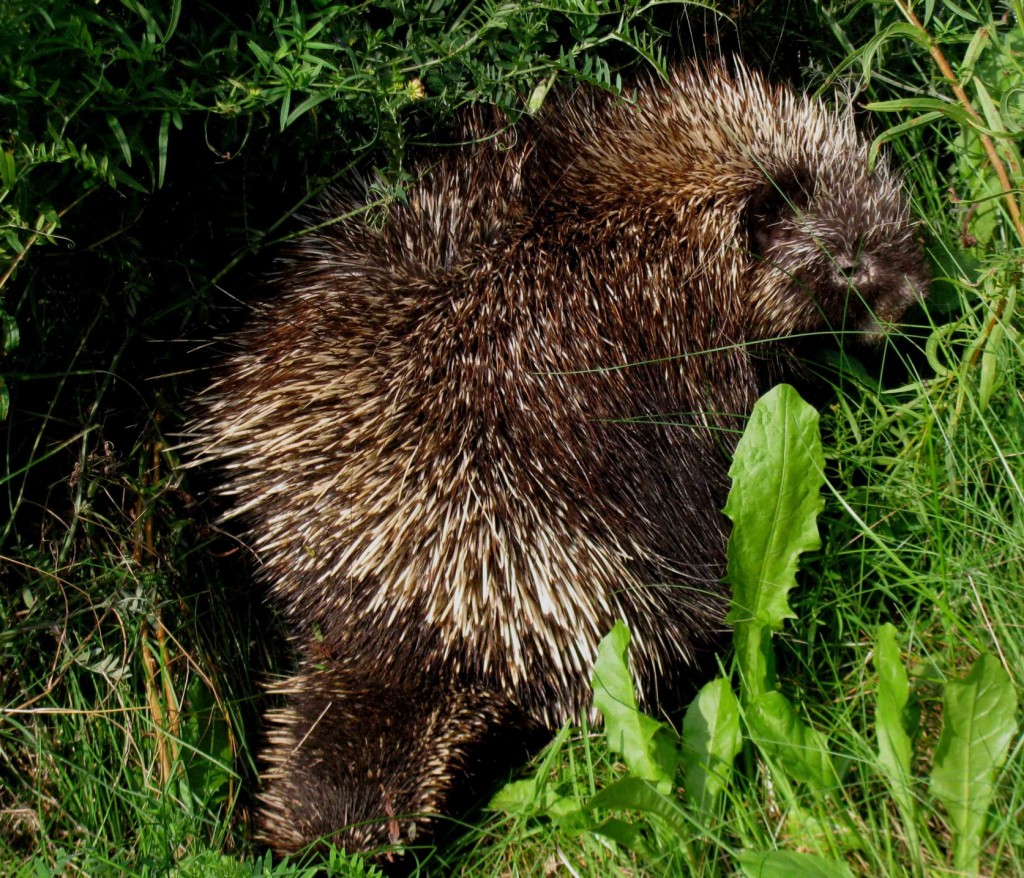
Porcupine (© Magi Nams)
Reference:
1. Adrian Forsyth. Mammals of the Canadian Wild. 1985. Camden House Publishing, Camden East, Ontario, 224-227.

